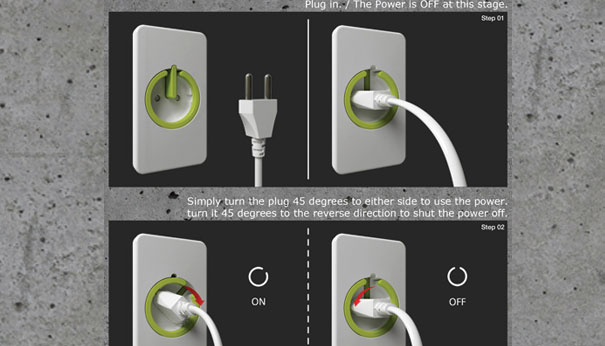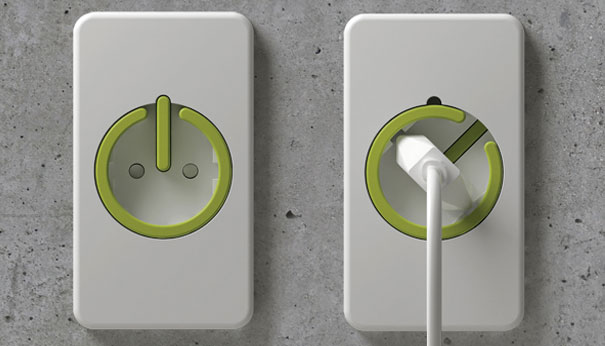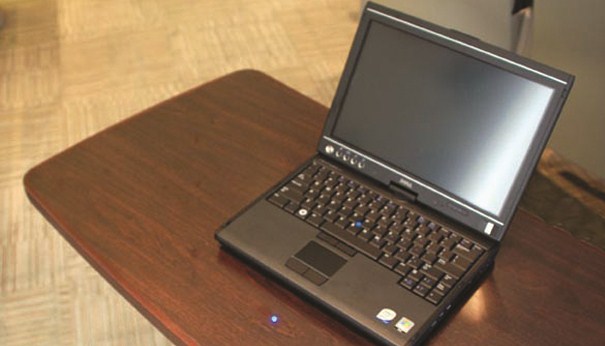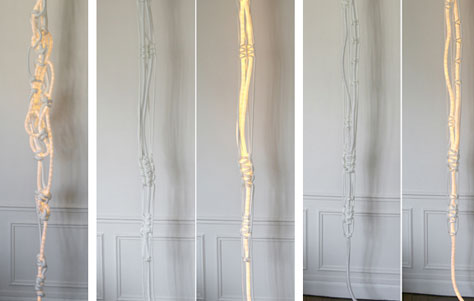Kimeda’s Switch
Whether it be for environmental or financial reasons, minimizing energy consumption has become a common goal. Designer Yong-jin Kim is making it easier with ‘Switch‘. This power socket takes the form of a power button, represented by a power symbol. Rather than “pulling the plug” to disconnect power, Switch has you turn the connected plug 45 degrees to the side. Switch capitalizes on the fact that standby power (electricity used by appliances connected to power but not in use) accounts for 11% of total household energy consumption.
Switch. Designed by Yong-jin Kim of Kimeba.
(Effectively) unplugging your toaster, coffee maker and laptop when you’re not using them can save money and reduce CO2 emissions. But since this can be somewhat of a hastle (and safety hazard), exposing you to short bursts of of electricity that often occur when unplugging or plugging in a cord and potentially causing damage to the cord over time, Kim came up with this alternative solution. “The power connection of the socket is closed when the plug is not inserted in the socket and the socket cannot be turned unless the plug is fully inserted.” These preventative measures effectively reduce the safety risks associated with conventional power sockets. Safety, morality and money-saving all in one: Switch makes it easy by letting you simply turn the socket.


Its graphic and iconic aesthetic makes it easy to understand. Switch serves as an instruction manual in its own right through its use of the power symbol. Unfortunately, the socket doesn’t eliminate the necessity of bending down and accessing potentially hard-to-reach places. If this concept were applied to something like Scott Behr’s Wired Side Table, the proposal could be effective for even the ultra-lazy.




Leave a Reply